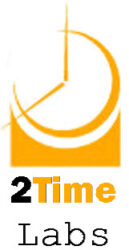 I realized recently that I need to add a critical sub-skill within the overall Discipline of Scheduling — it’s the ability to change a schedule as often as necessary.
I realized recently that I need to add a critical sub-skill within the overall Discipline of Scheduling — it’s the ability to change a schedule as often as necessary.
Back in the days of paper schedules this was a very difficult task, involving pencils, erasers, white-out and the like. It was easy to create a mess, and hard to move things around without getting frustrated. Many writers and authors of time management books and classes remember those days well, and decided that it was impossible to manage a schedule in this way. They recommend strongly that users not try to use a schedule of tasks, and to assign tasks to lists, while reserving calendars for appointments.
Things started to shift a bit when Outlook expanded to include a calendar function, around the time that the Palm Pilot hit the market in the mid 1990’s.
Unfortunately, many users who gave up on scheduling back then, still haven’t developed the skill, even though we are a long way from paper calendars, and it’s not hard to see a time when everyone will have a smartphone synced with a calendar that’s probably also stored in their wrist-watch.
Now, it’s relatively easy to rejigger a calendar many times in a single day, and it’s a skill that’s becoming easier as the technology improves. However, just because it can be done does not mean that the skill is an easy one to master. Here are the steps to be followed, in the form of a simple example.
You are at your desk in the morning having crafted your calendar for the day when your boss calls. She needs the Walker report done by 4pm in order to attend an important meeting, and she’s asking if you can get it done.
Your first response is, “Let me check.”
You look over your electronic calendar and notice that you were meant to complete working on the Simpson file that afternoon, and you tell your boss: “I had planned to work on the Simpson file this afternoon.”
She gets quiet for a long moment, and then replies: “I need that Simpson file — I’ll do the report instead.”
Five minutes later she calls back: “I just remembered… Simpson is away on vacation… let’s delay working on the file until he comes back.”
You agree, and open up your calendar. You slide the 3 hours scheduled for the Simpson file to the following week to an empty time-slot, and block out the afternoon to work on the Walker report.
This is a fairly typical transaction that takes place every day in the life of an Orange Belt, but there’s a difference between the way a White Belt conducts the same conversation. They first check their memory to see what they planned to do in that time-slot. Then, they might check their list of tasks to see what’s on it – and that could take some time.
Their use of memory is unreliable and imperfect, and a source of errors. Their lists might be too long to remember when they planned to do most of the items.
Notice that if the conversation was focused on a day 7 days in the future, or 77 days in the future, the Orange Belt would undertake the same actions. They’d check their schedule of tasks, and follow the same process.
The White Belt would have a problem, because their memory is not likely to stretch that far in the future, even if they are quite bright. At some point, they won’t remember what they planned to do, and they’ll struggle. They could easily make a mistake, because they are carrying so much in personal memory.
Re-scheduling is much easier if there is a standard, reliable process that’s followed that doesn’t change,and uses data that’s not based in memory.
It’s also made easier when one remembers that an electronic schedule is just a plan that is quite likely to change. In my schedule for example, I have set aside time for lunch each day of at least an hour, which includes a short nap. (I find that I need that kind of time to return to my work completely recharged, and have since found lots of research that supports the practice.)
However, there are some days when it’s just not possible or practical to take an hour, and I easily change my schedule to accommodate the shift. I rarely change the actual electronic schedule, but I often take a look to see what I had planned to complete after lunch.
Having my schedule in front of me help me to decide how much flexibility I have, and also what to do about major and minor schedule changes. When I can see not only today but other days laid out in front of me, I experience a peace of mind knowing that I am looking at a feasible plan.
That’s very different than keeping a schedule in my memory.
When the boss calls to make the change with a White Belt, he’s likely to do a quick mental scan, and under pressure he’s likely to say yes, without remembering to account for items like the Walker report. Or lunch. Or choir practice after work. Or his kid’s science project.
This is not to say that everyone needs to develop the skill of rejiggering a schedule, as there are many people whose overall number of time demands is low enough to plan each day as it comes, the way a White Belt does. There are also some who are unable to develop the skill of manipulating an electronic schedule, and must stick to paper.
However, for most people, that’s not good enough to handle the number of time demands that must master each day. They are always rejiggering their schedule depending on what’s happening in front of them, but the most skillful are keeping themselves unstressed by managing their schedules using a portable electronic tool, rather than just their memory.
This is especially true for those who must manage complex projects with multiple deliverables stretching out for a year or more. They schedule time in their calendars to complete activities that require anywhere from 5-10 distinct steps, and these must be scheduled in order to avoid trying to remember them all and ultimately failing.
The obvious fact is that better planning allows for better decision-making, and when interruptions and disruptions inevitably arise, it’s easier to work with a schedule laid out in front of you rather than a mental construct whose details are easily forgotten.
Some resist the idea of keeping a schedule of tasks because they believe that they’ll feel bad if they have to change it. Others don’t want the feeling of guilt that they think is inevitable from seeing a daily schedule get blown to bits by an unplanned activity.
The truth is, these things will happen whether or not a user has an electronic calendar or not, and it’s easier to deal with these feelings if the schedule is in front of the user, displayed on a screen, than if it is kept in their memory.
[email_link]






 What the survey I conducted confirmed for me is a hunch I have had that people need a lot more help in implementing their time management improvements.
What the survey I conducted confirmed for me is a hunch I have had that people need a lot more help in implementing their time management improvements.